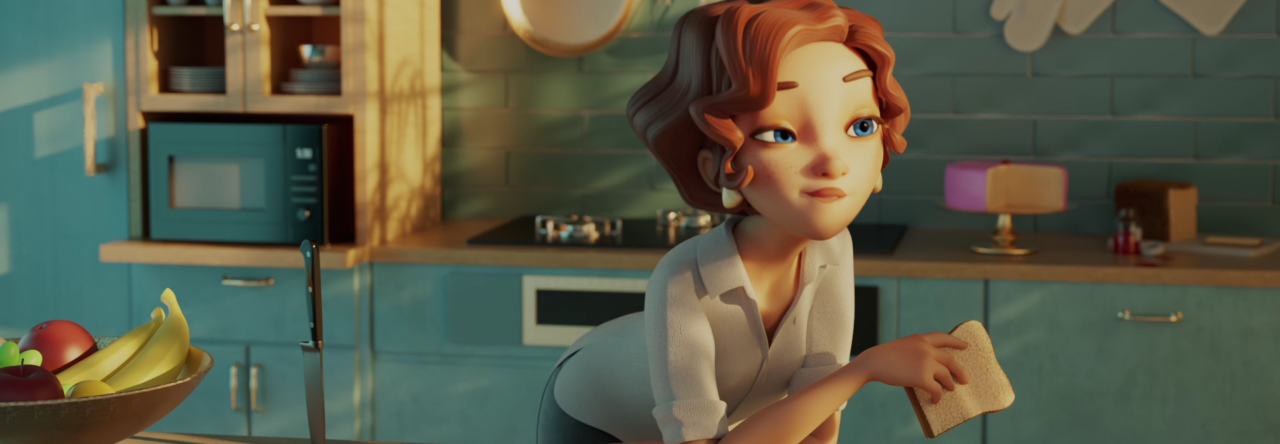Month: July 2016
In AnimSchool’s Environmental Modeling class, DreamWorks Modeler Juan Pablo Chen shows how to breakdown your environments and get a lot of mileage from modeling just a few variations of repeated assets.
To learn more about environmental modeling from one of the best online animation schools, join us at animschool.com
Those of us who dream of landing the coveted animation job have become accustomed to sitting and staring at a computer monitor for hours on end as we struggle to master the craft of giving life to our beloved characters. I can’t count how many times I have told aspiring animators to work hard and practice as many hours as possible. The more you animate, the better you will become. Of course, sitting in front of your computer moving stuff around in Maya is definitely a major ingredient to honing your animation skills, however, there are things we can do away from our computers that will add to our animation utility belt, and better prepare us for the challenges of being an animator.
1. Draw
I would encourage you to draw from life examples rather than attempting to copy existing characters, also known as fan art. In other words, stop drawing your version of Ariel the mermaid, and go to a figure drawing class. Be sure to focus your efforts on anatomy by deconstructing the main body parts with simple shapes. Study how the parts relate to one another, how they work together within the pose, how they flow together. Once you get proficient with anatomy and gesture drawings, study the fine details of anatomy and start exploring more realized figures.
 |
| Mike Mattesi teaching drawing in AnimSchool drawing class |
Make drawing fun by taking sketch trips to places like the zoo, museum, park, and shopping mall. Try to capture interesting moments, or poses. You should consider joining a sketch group, or an online drawing community. This is especially helpful because you will have people who can give you constructive feedback.
Whether you are trying to become more proficient as a traditional or CG animator, being a strong draftsman will give you an incredible advantage when posing your characters. You can use your drawing ability to help you plan shots, or plus poses. I often do my first blocking pass, and then draw over my poses as an attempt to find a stronger pose, or a clearer read on the action.
2. Be a Student of Acting
One of the easiest ways to learn about acting is to read books by some of history’s great performers. The time and money investment are accessible and flexible enough for anyone’s budget and schedule. Of course, you must be a diligent student and implement what you read with practical exercises.
The one drawback of just reading about acting is you won’t have a professional guiding you when you practice the techniques, but I would encourage you to invest in acting books as your starter kit to acting lessons.
The best way to get practice and valuable feedback is to take acting classes, or join an improv group.
Improv taught me to make quick decisions that service a story. I also learned how to listen and react, rather than trying to think ahead and have a predetermined response.
I would recommend you get involved with a local theater group. Ideally you would be able to practice acting, but if you have to start out volunteering as stage hand, you will be exposed to others who are acting and getting feedback, which can be just as valuable.
Always be on the lookout for interesting dialogue clips that have a range of emotional beats. Shoot video reference of yourself and get feedback on your acting. Get in the habit of practicing your acting without the intent of animating every clip you act out.
I believe it is useful to learn about voice acting and singing as well. You can take voice lessons, or just listen to lectures or podcasts by professionals. I enjoy listening to voice work to train my ear for inflections and nuance that makes a character unique, interesting, and entertaining.
3. Be a Student of Movement
 |
| Ministry of Silly walks: Monty Python |
One of the best ways to learn about movement is to be good at observing and dissecting movement. At first it may be more useful to watch videos on a device that allows you to draw-over poses. Then scrub from pose to pose and dissect how each body part is getting from one pose to another. Find the root of the motion, typically the hips, and work your way out, to understand how the motion is driven and stopped.
Dance is an art of movement that is very informative for an animator. Dance can be emotional. It has a texture of movement that can be good reference on how to build and break patterns. With dance it is easy to separate phrasing of motion, and to find strong, dynamic posing with flowing lines of action. The principles of animation are found in every dance performance.
I would also recommend you play a sport to stay active, and to forge relationships. Playing a sport tunes your body to execute actions. The more you do with your body, the better acting tool it will be for you.
A steady exercise routine is a good idea for every animator. We spend so much time sitting at a desk. We need to remember to take care of our bodies. It is also necessary to keep our bodies limber and able to perform, when we need to shoot some reference.
4. Be a Student of Storytelling
Animators are all storytellers. So it makes sense that we should get good at telling stories. Being a good storyteller is probably the most challenging task we are faced with, and it will take the most time and effort to master.
 |
| Mornoi Taylor teaching visual storytelling in AnimSchool class |
There are several passive activities that we can turn into active ways to learn to be a better storyteller. A fun exercise is to watch your favorite films with an agenda. Focus on specifics such as; staging, acting, pacing, scene negotiations, juxtaposition, conflict and resolution, character development, and so on. Attend theatrical productions and take notes on moments that moved you, and why they worked. It is just as useful to take notes on things that didn’t work. After I watch a disappointing movie, I do a fun story exercise. I try to replace the problem areas with better scenes and smarter story choices with the intent of making an overall stronger and entertaining story.
I encourage you to read the great stories of the past as well as current popular books.
5. Get a Hobby
I am reminded of a quote by the great Brad Bird, “Animation is about creating the illusion of life. And you can’t create it if you don’t have one.” Simply put boring people can’t create interesting characters. It’s easy to get sucked into your chair and spend countless hours slaving away at the computer. That’s definitely an important ingredient, but we can’t lose ourselves in the chair. We must force ourselves out into the world to experience it, and learn from it. I believe that having one or more hobbies helps us to become more interesting people, and more interested in other people. I would encourage you to choose something you enjoy that naturally creates opportunities to interact with people.
 |
| Rodrigo Rodrigues, an AnimSchool student: Enjoying with his family in Turkey |
Try your hand at a musical instrument, photography, wood-working, board games, sailing, or biking. There are so many possibilities that they are too numerous to list, so be creative and choose something that you have a genuine interest in learning. There’s also nothing wrong with going out and trying new things just for fun.
I can guarantee that you will be a better person and animator if you engage in activities that are unrelated to animation.
Finding bony landmarks in the beginning stages of modeling is essential even in the most stylized characters. They can help add structure and with judging proportions. No matter what body type your character has, the skeletal system stays more or less the same. So whether the character is very anatomically accurate or very stylized, finding these bony landmarks will greatly enhance your model, even if you have to smooth them out some later.
Here are some key bony landmarks to identify:
 1. Clavicle
1. Clavicle
Clavicles are more defined in some than others, but most characters should at least have a hint of them. They are shaped kind of like a handle bar. Also note that the clavicle is not straight across. It actually extends back towards the shoulders at an angle.
2. Costal Cartilage
Costal cartilage connects the sternum and the ends of the ribs. They are what form the ribcage shape that you see on the torso. Again, most characters should at least have a hint of this landmark, especially in thinner or more muscular body types.

3. Spine of Scapula
The back can be a scary place for modelers. There’s a lot going on back there and adding too much detail can end up just looking lumpy or unnecessarily complicated. In most cases though, at least adding the Spine of Scapula can be enough depending on how muscular the character.
4. 7th Cervical Vertebra
If you feel the back of your neck, you will almost definitely find a small bump. This is the 7th cervical vertebra. It is the largest vertebra in your neck. Adding this small landmark can surprisingly make a big difference in enhancing your character.
5. Greater Trochanter

Most people mistakenly think that the widest part of the pelvis region is at the hips, but really it’s right below that at the Greater Trochanter. The Greater Trochanter is a fairly prominent protrusion located at the top of the thighs.
6. Sacral Triangle
The sacral triangle is made up of the sacrum and the posterior superior iliac spines (those two little dimples right above the butt). Those bones usually form a visible triangle and when added to a character can give some much needed structure to that region.
To learn more about anatomy for character modeling from one of the best online animation schools, join us at animschool.com









